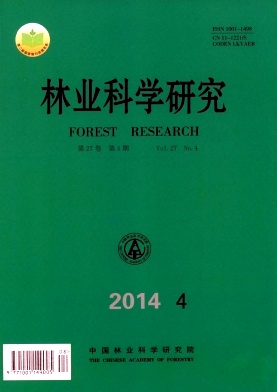|
[1]
|
康 乐.植物对昆虫的化学防御[J].植物学通报,1995,12(4):22-27
|
|
[2]
|
杜永均,严福顺.植物挥发性次生物质在植食性昆虫、寄主植物和昆虫天敌关系中的作用机理[J].昆虫学报,1994,37(2):233-249
|
|
[3]
|
杜家纬.昆虫信息素及其应用[M].北京:中国林业出版社,1988
|
|
[4]
|
杜家纬.植物昆虫间的化学通讯及其行为控制[J].植物生理学报,2001,27(3):193-200
|
|
[5]
|
Mitcheli E R, Tingle F C, Heath R R.Ovipostional responses of three Heliothis species (Lepidoptera:Noctuidae) to allelochemicals from cultivated and wild host plants[J]. Journal of Chemical Entomology,1990,16(6):1817-1827 |
|
[6]
|
Binder B F, Robbins J C, Wilson R L. Chemically mediatel oviposition behaviors of the European cornborer,Ostrinia nubilalis (Epidoptera:Pyralidae)[J].Journal of Chemical Entomology,1995,21 (9):1315-1327 |
|
[7]
|
Schoohoven L M, Jermy T, Van L J A. Insect-Plant Biology[M].Cambridge:Cambridge University Press,1988 |
|
[8]
|
Du J W. Current and future prospects for insect behavior modifying chemicals in China [J]. Agricultural Chemistry and Biotechnology,2000,43(4):222-229 |
|
[9]
|
Nottingham S F Host-plant finding in the cabbage root fly, Delia radicum(Diptera: Anthomyiidae)[J].Journal of Insect Physiology,1988,34(2):227-234 |
|
[10]
|
武春生,方承莱.《中国动物志》(昆虫纲 鳞翅目 舟蛾科)[M].北京:科学出版社,2003
|
|
[11]
|
萧刚柔.中国森林昆虫(第二版)[M].北京:中国林业出版社,1992:1027
|
|
[12]
|
樊 慧,金幼菊,李继泉,等.引诱植食性昆虫的植物挥发性信息化合物的研究进展[J].北京林业大学学报,2004,26(3):76-81
|
|
[13]
|
严善春,张丹丹,迟德富.植物挥发性物质对昆虫作用的研究进展[J].应用生态学报,2003,14 (2):310-313
|
|
[14]
|
娄永根,程家安.虫害诱导的植物挥发物:基本特性,生态学功能及释放机制[J].生态学报,2000,20(6):1079-1106
|
|
[15]
|
Tumlinson J H, Turlings T C J, Lewis W J. The semiochemical complexes that mediate insect parasitod foraging[J].Agriculture Zoology Reviews,1992,5:221-252 |
|
[16]
|
Takayashi J, Dicke M, Posthumus M A. Volatile herbivore-induced terpenoids in plant-mite interactions-variation caused by biotic and abiotic factors[J]. Journal of Chemical Entomology, 1994,20(6):1329-1334 |
|
[17]
|
Turlings T C J, Turlings T C, Loughrin J H, et al. How caterpillar-damaged plants protect themselves by attracting parasitic wasps[J]. Proceedings of the National Academy of Sciences,1995, 92(10):4169-4174 |
|
[18]
|
Jaenike J. Host specialization in phytophagous insects[J].Annual Review of Ecology and Systematics,1990,21:243-273 |
|
[19]
|
Fan J T, Sun J H. Influences of host volatiles on feeding behaviour of the Japanese pine sawyer, Monochamus alternatus[J].Journal of Applied Entomology,2006,130(2):238-244 |
|
[20]
|
Barclay H J, Judd G J R. Models for mating disruption by means of pheromone for insect pest control[J].Population Ecology,1995,37(2):239-247 |
|
[21]
|
Giebultowicz J M, Raina A K, Uebel E C, et al.Two-step regulation of sex-pheromone decline in mated gypsy moth females[J].Insect Biochemistry and Physiology,1991,16(2):95-105 |
|
[22]
|
Mclaughlin J R, Mitchell E R, Kirsch P. Mating disruption of diamondback moth (Lepidoptera: Plutellidae) in cabbage reduction of mating and suppression of larval populations[J]. Journal of Economic Entomology,1994,87(5):1198-1204 |
|
[23]
|
Wu H H, Huang M S, Wan P, et al.Emergence mating and ovipositionbehavior of the chinese population in pink bollworm Pectinophora gossypiella (Lepidoptera:Gelechiidae)[J].Journal of Interative Agriculture,2013,12(4):653-662 |
|
[24]
|
Pettersson J. Studies on Rhopalosiphum padi (L.). Laboratory studies on olfactometric responses to winter host Prunus padus L.[J].Lantbrukshogskolans annaler,1970,36:381-399 |
|
[25]
|
Willis E R. Humidity reactions of Tribolium castaneum (Herbst)[J].Journal of Experimental Zoology,1950,115(3):561-581 |
|
[26]
|
Schurr K, Holdaway F G.Olfactory responses of female Ostrinia nubilalis (Lepidoptera: Pyraustinae)[J].Entomologia Experimentalis et Applicata,1970,13(4):455-461 |
|
[27]
|
Hideo U, Akira S. Possible role of cabbage leaf wax bloom in suppressing diamondback moth Plutella xylostella (Lepidoptera: Yponomeutidae) oviposition[J].Applied Entomology and Zoology,1989,24(3):253-257 |
|
[28]
|
Hughes P R, Renwick J A A, Lopez K D. New oviposition stimulants for the diamondback moth in cabbage [J].Entomologia Experimentalis et Applicata,1997,85(3):281-283 |
|
[29]
|
Riggin B T M, Gould F, White C.Increased ovipositional attractancy to surfactant-treated broccoli by the diamondback moth (Lepidoptera: Plutellidae): Tests of potential mechanisms [J]. Journal of entomological science,1998,33(3):261-269 |
|
[30]
|
王宏媛,曹振军,孟 玲,等.豚草生育期和被利用状态对广聚萤叶甲产卵选择的影响[J].生物安全学报,2011,20(4):305-309
|
|
[31]
|
张庆贺,姬兰柱.植食性昆虫产卵的化学生态学[J].生态学杂志,1994,13(6):39-43
|
|
[32]
|
Tingle F C, Heath R R, Mitchell E R.Flight response of Heliothis-subflexa (Gn.) females (Lepidoptera:Noctuidae) to an attractant from groundcherry, Physalis angulate L.[J].Journal of Chemical Ecology,1989,15(1):221-231 |
|
[33]
|
祝增荣,程家安,陈 琇.昆虫窝卵数:现象及其解释[J].大自然探索,1994,13(3):48-51
|
|
[34]
|
Anbutsu H, Togashi K. Oviposition deterrent by female reproductive gland secretion in Japanese pine sawyer, Monochamus alternatus[J].Journal of Chemical Ecology,2001,27 (6) :1151-1161 |
|
[35]
|
Chiang H C. Overwintering corn borer, Ostrinia nubilalis, larvae in storage cribs [J]. Journal of Economic Entomology,1964,64(5):666-669 |
|
[36]
|
Renwick J A A , Radke C D. Host plant constituents as oviposition deterrents for the Cabbage looper, Trichoplusiani Entomol [J].Entomologia Experimentalis et Applicata,1981,30(2):201-204 |





 DownLoad:
DownLoad: